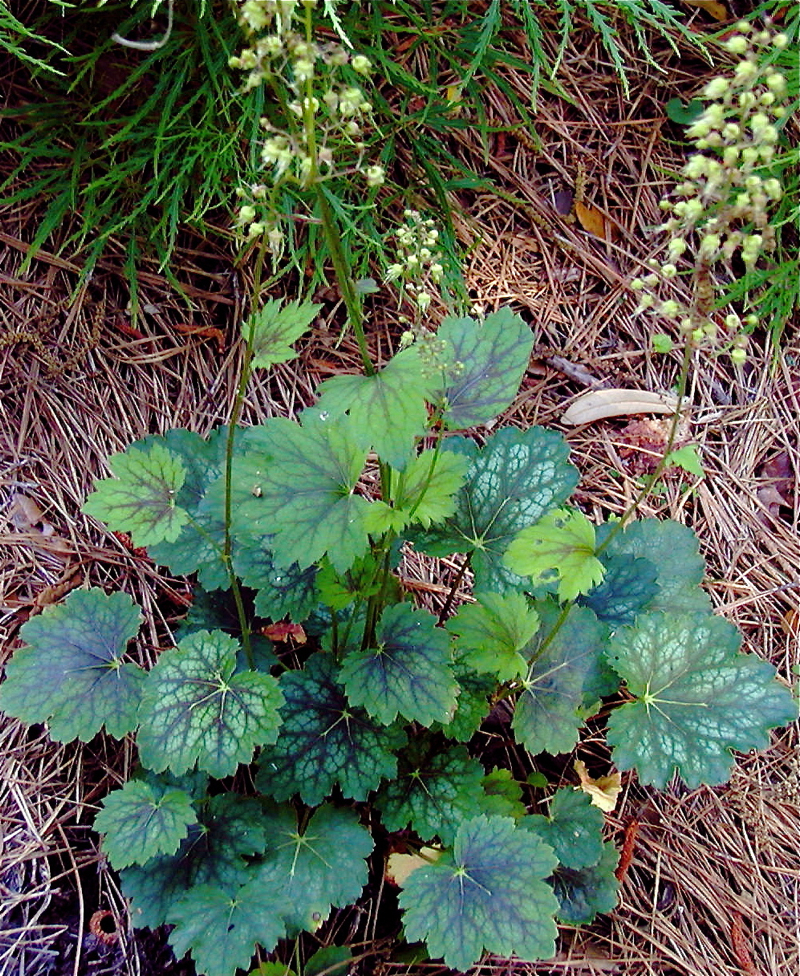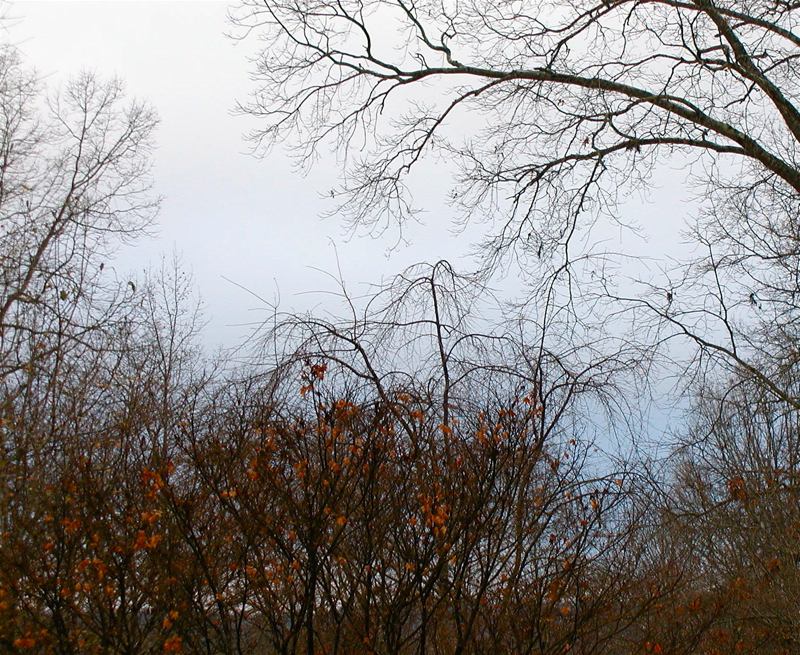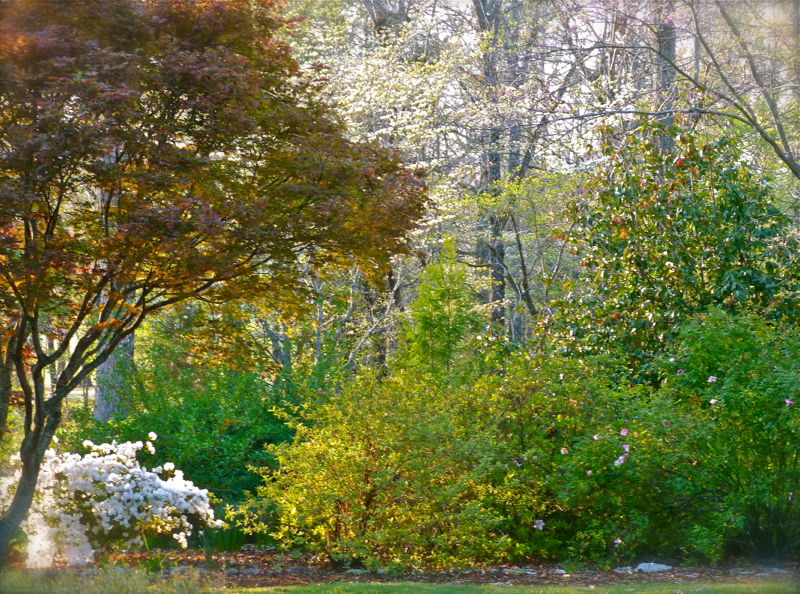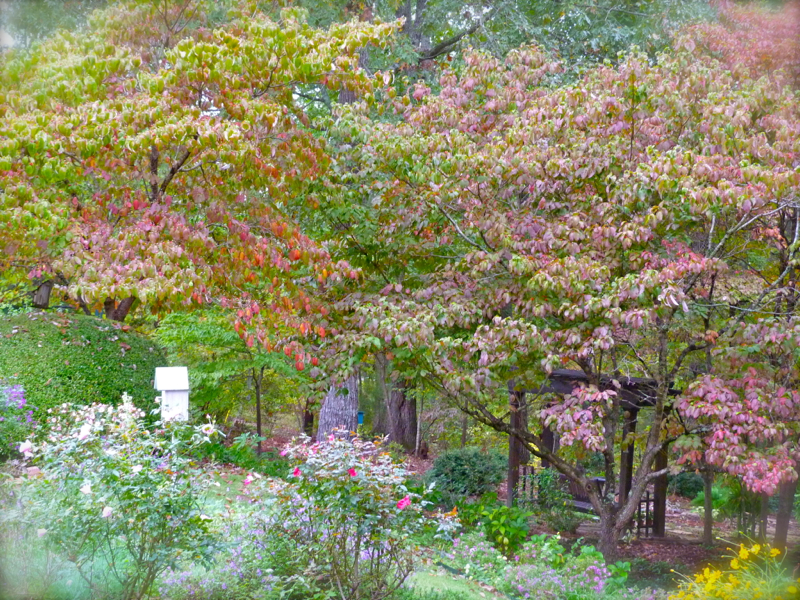Ten Favorite Plants For Foliage
 Wednesday, February 8, 2012 at 7:30PM
Wednesday, February 8, 2012 at 7:30PM I was thinking about foliage the other day, about how my garden depends on it throughout the year for structure and beauty. I have always considered flowers secondary. My particular zone 7b garden is blessed (or cursed, depending on one's attitude) with lots of shade, acidic soil, and long hot summers. Flowers are usually fleeting and demand higher maintenance. I learned early that I can get more sustained color by emphasizing foliage.
So I decided to make a list of my top ten plants for foliage. This was not easy! There are multitudes of foliage plants with wonderful textures and colors. How to choose? I finally set up the following criteria:
I must love it. The plant must have been growing successfully in my garden for at least three years. This means it has lived through drought, as well as weeks of torrential downpours, steamy summers, and unpredictable winters. It has not succumbed to bugs or blight or strange fungal diseases that appear overnight. It has taken care of itself through weeks or months of neglect. I eliminated all annuals — maybe not really fair, but this helped me to shorten my list of potential choices.
So, here are my personal top ten foliage plants, in no particular order; I have provided links for those on which I have written more detailed plant profiles:
1. Deodar cedar, 'Feelin' Blue':I have often featured this small weeping evergreen tree in my blog posts. I can't say enough good things about it. It has incredible color, and I love its form and feathery texture. It grows on the sunny edge of my woodland garden.
2. Japanese maple, all of them. I couldn't choose which of my thirteen I love best. Their foliage, with many shades of green, gold, red and orange, is beautiful from spring through fall, some with lacy textures, some with weeping forms, all gorgeous.
3. Juniper 'Saybrook Gold'. This is another evergreen planted along the sunny edge of the woodland garden. It has marvelous evergreen foliage. In spring it is pure gold, turning more limey green in summer. The long branches are held horizontally, and it also has a feathery texture I love. Last fall I cleared away the cotoneaster on the woodland bank. They were perishing from disease and stress, so I replaced them with additional 'Saybrook Gold' plants. Right now they look funny alongside their mature hillside mates, but already they are putting out lots of new growth. Grow, grow! And catch up with the others, I say. 'Saybrook Gold' is growing behind Japanese maple 'Waterfall'. Both have fabulous gold springtime foliage.
'Saybrook Gold' is growing behind Japanese maple 'Waterfall'. Both have fabulous gold springtime foliage.
4. Hostas. The three that have prospered in my garden are 'Elegans', 'Sum and Substance, and 'Francis Williams'. Seedlings have sprouted which are, I believe, hybrids of 'Elegans' and 'Francis Williams'. They all like moist, rich soil and shade. As time passes I am adding more hosta cultivars to my garden. Time will tell which ones will do as well as these three.
5. Autumn fern. I haven't had success with many ferns, but this evergreen one has thrived. New fronds have a beautiful coppery color.
6. Variegated Hydrangea. I keep this deciduous shrub mulched with pine straw, and I do water it during dry spells, but otherwise it is easy-care. It has lovely summer flowers, but its remarkable green and white leaves brighten the shady entrance to the woodland garden from spring through fall.
7. Rosemary. I grow a couple by the patio. Its evergreen, needle like foliage is terrific, and it's even better that I have a handy supply of this aromatic herb for recipes. It has grown into a nice shrub, and I like the way it combines with other plants in the area.
8. Heuchera. This native plant is increasing in popularity, and there are many great cultivars. I grow them in semi-shade in several garden areas. The airy summer blooms are a bonus.
9. Canna Lily 'Tropicana': I didn't want to like this gaudy plant, but it has pulled at me to embrace the tropical side. When the sun shines through its huge, multicolored leaves, I am reminded of stained glass. I can't stop taking photos of it. It goes dormant for winter but has proven hardy in my area. It carries its bright orange summer blossoms like a torch, but I would like it just as well without them. It is planted in a sunny area near the house, and I have a good view of it from my front windows.
I didn't want to like this gaudy plant, but it has pulled at me to embrace the tropical side. When the sun shines through its huge, multicolored leaves, I am reminded of stained glass. I can't stop taking photos of it. It goes dormant for winter but has proven hardy in my area. It carries its bright orange summer blossoms like a torch, but I would like it just as well without them. It is planted in a sunny area near the house, and I have a good view of it from my front windows.
10. Fothergilla major. This southeastern U.S. native is a great shrub in my woodland garden. It has delightfully fragrant bottlebrush blooms in the spring, but the leaves are what won my heart. They are a lovely blue-green in spring and summer and then turn multiple shades of purple and orange in the fall. Fothergilla gardeneii is a dwarf form.
These are plants that do well in my garden. It is always fun to see what does well for other folks. I enjoy being a member of Blotanical, a worldwide community of garden bloggers who share ideas and experiences in their gardens. Many have inspirational gardens and terrific knowlege to share. Some of these bloggers have become true, if virtual friends. Recently three different bloggers gave me the Versatile Blogger award. Now, I think all gardeners have to be versatile! Thanks so much to:
Bumble Lush, who gardens outside of Washington DC and specializes in growing vegetables in containers.
Casa Mariposa, who has an organic garden in Zone 7, also near Washington DC.
Lyn, The Amateur Weeder, who gardens a world away from me in New South Wales, Australia.
If you are not familiar with their blogs, I encourage you to get to know them!
Last year I received The Stylish Gardener Award, a similar award which had the same requirements for acceptance, including posting seven random facts about myself and listing additional great blogs for readers to enjoy. These awards are fun and a great way to find out about other bloggers. So if you missed it last year and are curious, click onto A Stylish Award for Someone Who Wears Baggy Pants.
Thanks to all of you who follow my blog. Happy gardening! Deborah
 Permalink
Permalink 






 Many plants and people suffer through the summer doldrums in August, wilting in the heat. The bright foliage of weeping Deodar Cedar 'Feelin' Blue' is a refreshing, deceptively cool note in the Woodland Garden.
Many plants and people suffer through the summer doldrums in August, wilting in the heat. The bright foliage of weeping Deodar Cedar 'Feelin' Blue' is a refreshing, deceptively cool note in the Woodland Garden. Look very closely amidst the garlic chives. Can you find two hairstreak butterflies?
Look very closely amidst the garlic chives. Can you find two hairstreak butterflies?


